The COVID-19 pandemic has transformed how millions of people work and access healthcare. In response, many employers have adjusted their employee benefits, increasing access to programs that support employee health from home.
Against this backdrop, Fern Health surveyed 614 workers across the U.S. who receive health benefits from their company to learn what benefits people want now.
We asked questions around the health challenges that in-person and remote employees are dealing with, how employers can best support them, and what program features make employees more interested in using a benefit. While some responses corresponded with our hypotheses, a few surprises emerged in our findings, too.
What health benefits do employees want?
In our survey, we asked what wellness benefits employees are most interested in that their employer didn’t currently offer. Exercise reimbursement, mental health support, and support for back and joint pain topped the list.
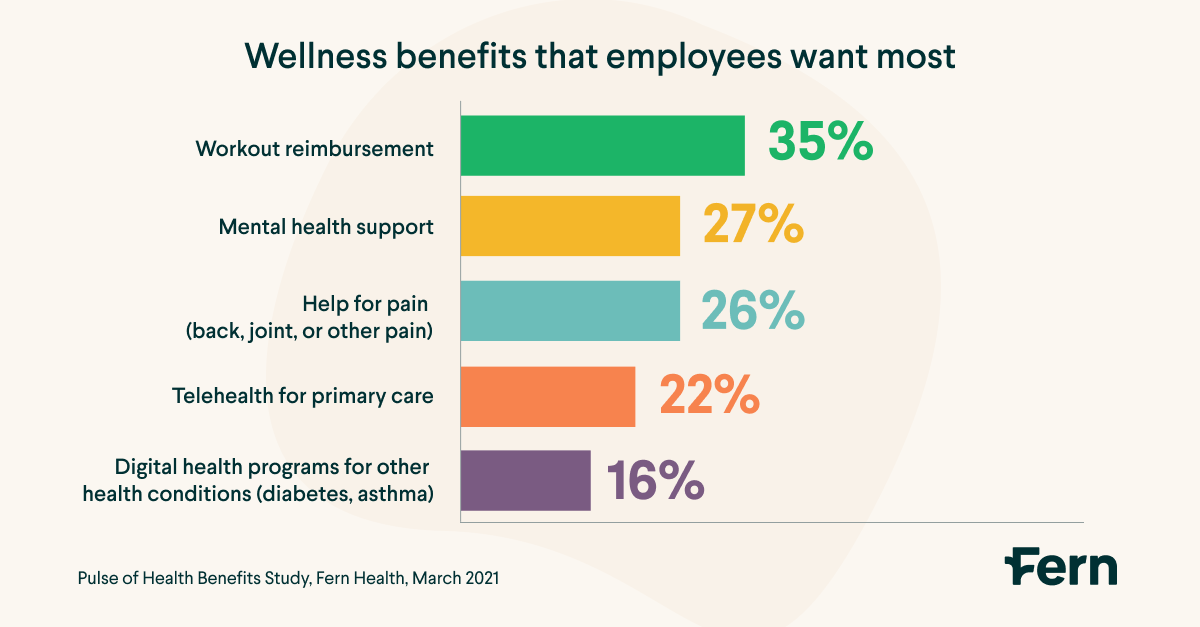
We also asked what health concerns those working from home and in-person are experiencing during the COVID-19 pandemic, aside from the coronavirus itself.
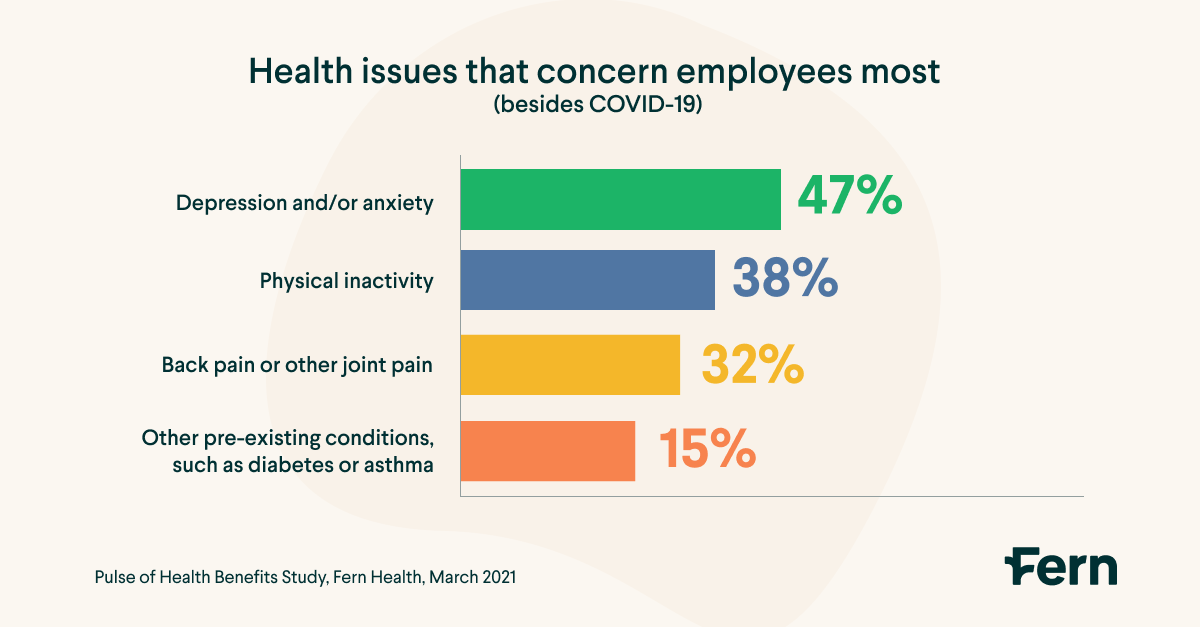
As other surveys have underlined, mental health, physical inactivity, and pain issues have been top concerns for those both working from home and remotely.
In fact, our survey did not find a difference between in-person and remote employees, both in terms of health concerns and benefit interests.
However, one significant difference we found was around physical inactivity: Individuals who are working remotely are 1.5 times more concerned about physical inactivity than individuals who work in-person.
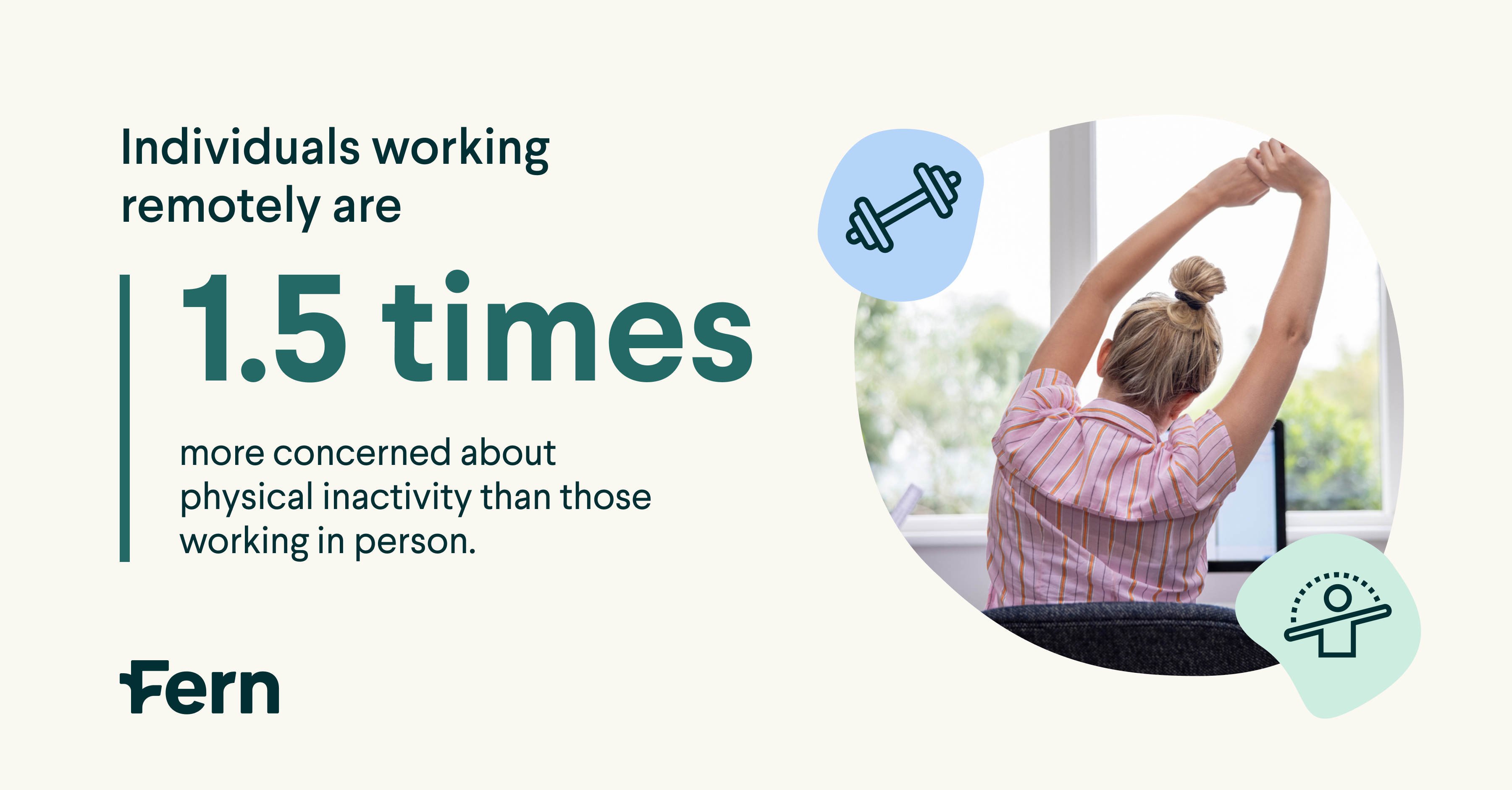
Concerns around mental health and chronic pain are similar no matter where employees are working, underlining the need for remote work wellness programs to have parity with in-person benefits.
Importantly, we also analyzed whether there is a relationship between the health concerns employees are experiencing, and the support they want from their employer.
Results suggest that health concerns and an interest employer support are closely linked. For example, respondents concerned about back or joint pain during the pandemic are 7 times more likely to be interested in employer-sponsored back, joint, or other pain programs.
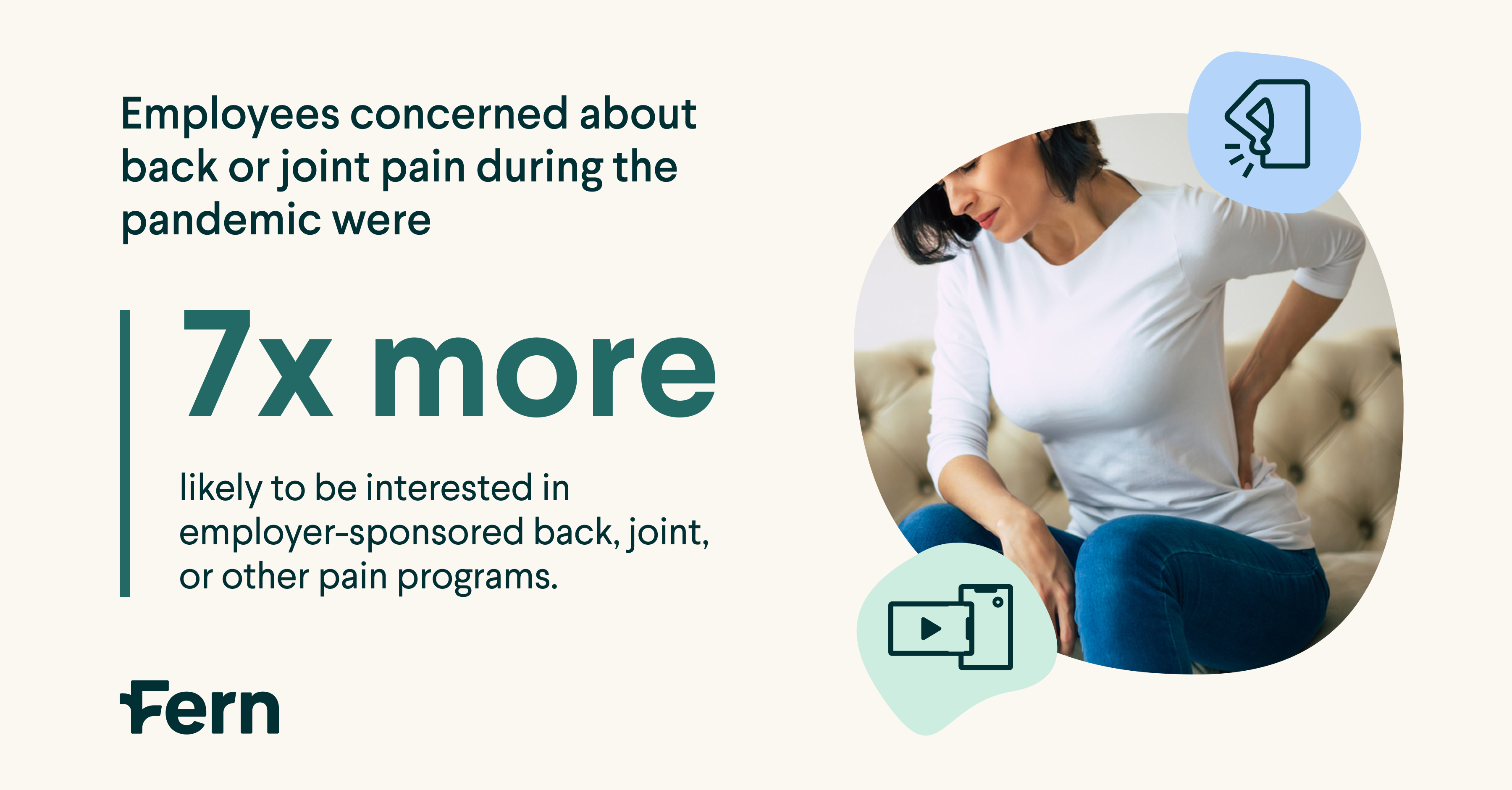
Those who reported concern about depression and anxiety are three times more likely to be interested in an employer-sponsored mental health program, compared with those who are not concerned about depression or anxiety.
Mental health and musculoskeletal pain are connected
Because the survey was multi-select, we are also interested in the correlation between the types of benefits respondents are interested in.
In this analysis, we found that respondents who are interested in employer-sponsored mental health support are four times more likely to be interested in employer-sponsored back, joint, or other pain programs, compared with those who are not interested in mental health support.
These findings are consistent with medical research, which shows that depression and chronic pain occur together up to 50% of the time – underscoring the importance of addressing mental health in the context of chronic pain, and vice versa.
Inactivity is another risk factor for chronic musculoskeletal pain. Interestingly, the survey showed that individuals who are interested in employer-sponsored workout reimbursement are 45% less likely to be interested in employer-sponsored back, joint, or other pain programs, compared with individuals who are not interested in workout reimbursement. This finding suggests that if employers are offering gym memberships, they may not be valuable to employees living with the pain. It also may highlight the relationship between regular exercise and lower levels of chronic pain.
Health coach support is important to those interested in programs for back & joint pain and mental health
The survey also explored what factors motivate employees to participate in wellness programs.
Across the board, a classic incentive – a gift card – was the most popular incentive, with 51% of respondents choosing it as a factor that would make them more likely to participate in a wellness program.
Employees overall are also interested in another popular freebie: Fitness trackers. In the survey, 37% said that receiving a fitness tracker would make them more likely to participate in a wellness program.
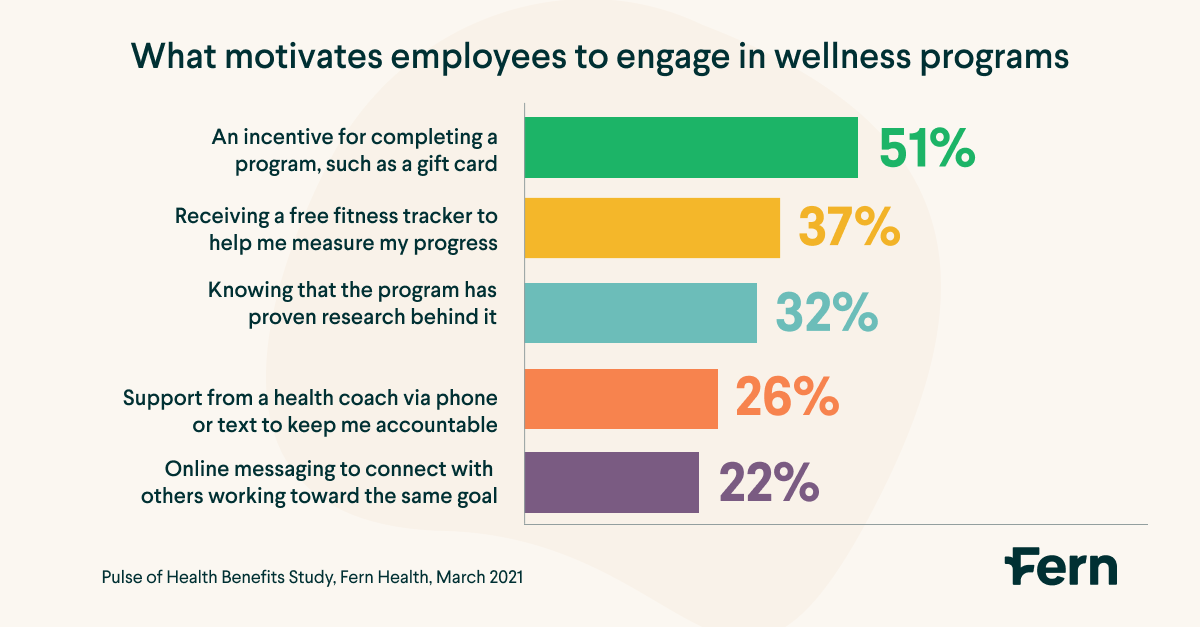
Those interested in back and joint pain programs are two times more likely to prefer programs that include health coach support, compared with respondents who are not interested in employer-sponsored pain programs.
Coaches available through Fern are trained in pain neuroscience education to help participants overcome common barriers to recovery, such as fear of movement and pain catastrophizing. Coaches also guide members towards setting personally meaningful goals, which research shows is critical to motivation and engagement in wellness programs.
Research shows that health coaching is associated with clinically-meaningful reductions in long-term pain intensity. It’s also associated with improvements in psychological and physical function.
“Digital programs are both convenient and effective. But for a condition like chronic pain, having support from a real person you trust is important, too,” says Jackie Mendelsohn, DPT, clinical specialist at Fern Health. “Coaching helps keep participants accountable, give them someone to go with questions, and helps them feel supported and encouraged.”
How can employers meet demand?
The Fern Health Pulse of Employee Benefits survey showed that whether employees are working remotely or in person, their concerns and needs are largely the same. Employees are looking for support from their employer for concerns that have been exacerbated by the COVID-19 pandemic, especially pain, mental health, and inactivity.
The survey also revealed where health concerns intersect, such as mental health and chronic pain. To create an impactful benefits strategy, employers should understand how conditions are connected, and provide benefits that help employees feel supported.
And a gift card can’t hurt, either.






